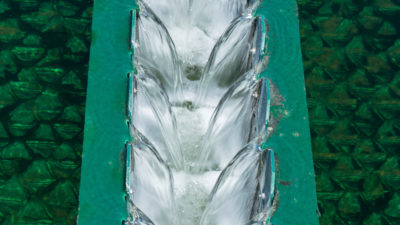Washington Reclaimed Water Rule Adopted

 On January 23, 2018, after more than 10 years of discussion and revision, the Washington Department of Ecology adopted the Reclaimed Water Rule. The Rule will go into effect on February 23, 2018. You can read the Rule in its entirety here.
On January 23, 2018, after more than 10 years of discussion and revision, the Washington Department of Ecology adopted the Reclaimed Water Rule. The Rule will go into effect on February 23, 2018. You can read the Rule in its entirety here.
Reclaimed water has long been used in the State of Washington for industrial, commercial, and construction purposes, as well as a way to replenish wetlands and aquifers. The Revised Code of Washington Chapter 90.46, put into effect in 1995, governs the acquisition, use, and treatment standards for reclaimed water, and establishes the permitting process for both wastewater discharge and reclaimed water use. The goal of the newly-enacted Reclaimed Water Rule is to work hand-in-hand with this existing legislation to streamline the process of acquiring permits and to make clear the methods and standards of treatment required in order for wastewater to be deemed acceptable for commercial, industrial, and institutional uses.
By making the route to reclaiming water more straightforward, the Department of Ecology hopes to encourage water users to limit their discharge of wastewater back into the environment and decrease overall draw from groundwater sources to preserve limited water resources, particularly during the dry summer months. If reclaimed water can be used in the place of potable water for purposes like flushing toilets or watering lawns, the impact of these activities can be substantially mitigated. A good overview of the potential uses and benefits of reclaimed water can be found on the Department’s website.
One of the main concerns about the Reclaimed Water Rule, and a major reason why it remained on the back burner for the better part of 12 years, is the potential for infringement upon senior water users’ rights. By reclaiming water that would otherwise flow into streams, lakes, or aquifers and reusing it without it being reintroduced into the originating source of water, the amount of water available to water right holders that had access to those “returns” could be diminished. As a result, the Rule was amended to include provisions for compensation and mitigation should such infringement occur; however, consistent with procedure for issuing all water right permits, no permits shall be issued to projects that impair the rights of senior water users.
While reclaimed water is not designated as drinkable, it is still subjected to strenuous testing and treatment processes similar to those which drinking water undergoes. Following initial treatment at a water treatment plant, wastewater is further filtered, disinfected, and repeatedly tested to ensure that it can be safely introduced into the environment. Once it has been approved as safe, reclaimed water can be used to irrigate crops, fight fires, clean streets, and control dust, among other uses. The Washington State Department of Health issued a “Frequently Asked Questions” memorandum last summer, (available on their website) that briefly details the public health protections covered in the Reclaimed Water Rule.
If you are interested in learning more about the Reclaimed Water Rule and the permitting process, the Washington Governor’s Office for Regulatory Innovation and Assistance has assembled an overview that provides greater detail about the Rule and the application process.
Stay tuned to Schroeder Law Offices’ Water Law Blog for more news!